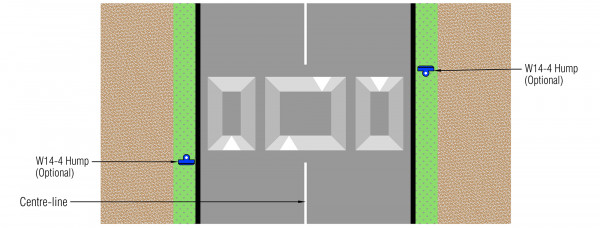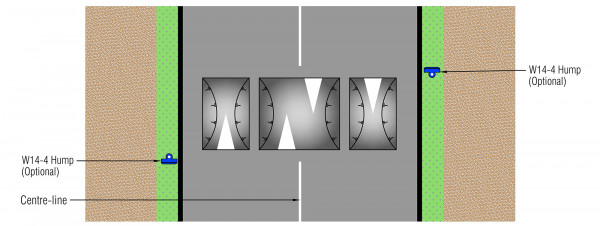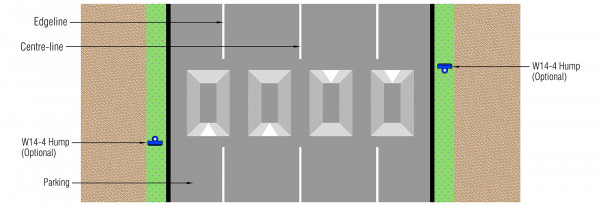A speed cushion is a form of road hump occupying only part of the traffic lane in which it is installed, refer to Figure 14‑7, Figure 14‑8 and Figure 14‑9 for general marking layouts at speed cushions. A minimum of one hump ramp markings should be used on the approach ramp. If a cushion is centrally located across the roadway in a position where vehicles are likely to travel over it in both directions, a hump ramp markings should be used on both approach ramps.
Figure 14‑7: General layout at speed cushions

View larger image [JPG, 864 KB]
Figure 14‑8: General layout where a speed cushion is located on the centre-line

View larger image [JPG, 882 KB]
Figure 14‑9: General layout where a speed cushion is not located on the centre-line

View larger image [JPG, 752 KB]
Where a road has a marked centre-line, this should continue between the speed cushions. Where there is not an existing centre-line, a 30m long 100mm wide centre-line should be marked on each approach to the speed cushions and terminate at the longitudinal position of the top of the ramp, as shown in Figure 14‑7.
Where there is a speed cushion on the centre-line of a road, markings as described above should be provided, however, the centre-line markings should terminate 1m in advance of the bottom of the ramp on each side of the central speed cushion so it is not to depict an arrow marking.